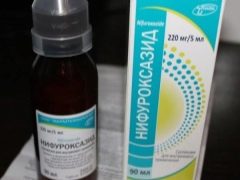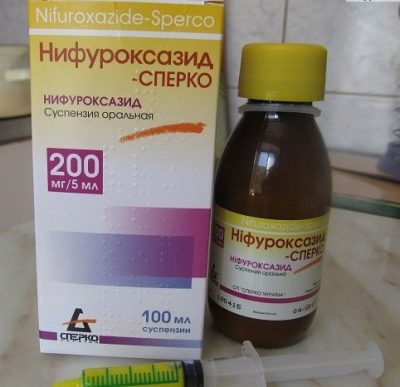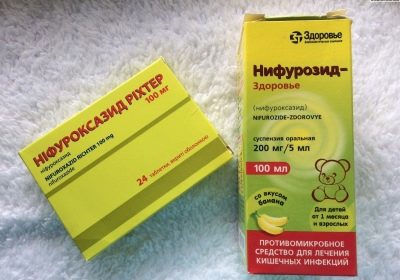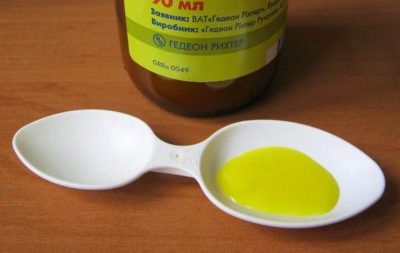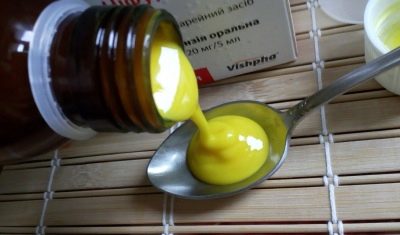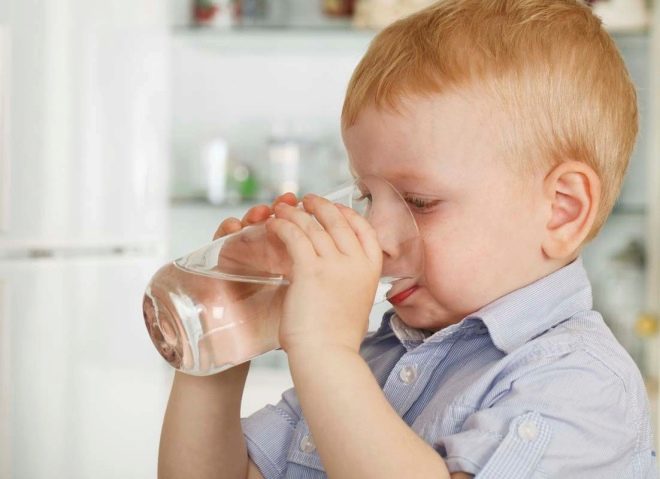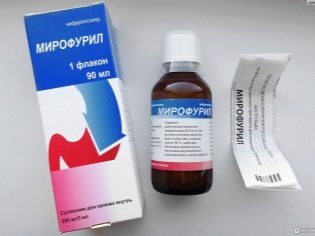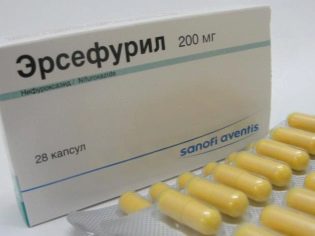Suspension "Nifuroksazid" for children: instructions for use
Nifuroxazide is an antibacterial drug that is often used in intestinal infections to quickly eliminate diarrhea and other unpleasant symptoms. It does not belong to antibiotics, but is an intestinal antiseptic from the group of nitrofurans.
"Nifuroksazid" is not absorbed in the intestine and does not enter the bloodstream, which distinguishes it from antibiotics. He fights only with bacteria that are in the gut, but does not destroy representatives of the normal intestinal microflora. Especially for young patients, one form of Nifuroxazide is a suspension.
Release form
The liquid form of “Nifuroxazide” is sometimes mistakenly called a syrup or solution, but in fact it is a sweet suspension, which has a yellow color and a banana smell. One bottle contains 90 ml of this drug and is supplemented with a double dosing spoon of 2.5 and 5 ml. Next to the name, a second word may sometimes be present, which does not affect the properties of the drug, but only indicates the manufacturer. For example, in pharmacies Nifuroksazid-Richter is sold by the well-known company Gedeon Richter.
In addition to the suspension, the drug is also presented in coated tablets. They have an elongated shape and yellow color. In addition, the drug is available in several Russian manufacturers and in capsules, in which the dense shell of yellow gelatin, and inside is a yellow powder.
In solid forms, Nifuroxazide is used in patients over 6–7 years old who can swallow a tablet or capsule without any problems.
Composition
The main ingredient of the drug is the same name and is presented in 5 milliliters of suspension in a dose of 220 mg. Inactive substances of the drug are banana flavor, sucrose, sodium hydroxide, citric acid and other compounds. They may differ from different manufacturers, so the exact list, if necessary, should be clarified from the annotation.
Operating principle
The active substance of the suspension has a local (only in the intestinal lumen) antibacterial effect on various microbes that can affect the digestive tract. In particular, the drug affects the flow inside the cells of pathogens of some important biochemical processes, as a result of which the membranes of harmful microorganisms are destroyed, their reproduction slows down, and they die.
Nifuroxazide is active against pathogenic Escherichia, enterobacteria, Salmonella, Staphylococcus and many other microbes. The drug has no effect on pseudomonads and some Protein strains, as well as on the normal intestinal flora.
The medicament does not act on viruses, however, if a bowel is damaged during viral infections, the use of a suspension helps prevent possible bacterial complications.
Indications
The main reason for the use of "Nifuroxazide" is diarrhea, which manifests intestinal infection. The drug is prescribed for acute illness, and for colitis, and for chronic enterocolitis. It can also be included in the course of therapy for dysbacteriosis, in order to reduce the number of pathogenic microbes and to enable normal bacteria to develop normally. In addition, Nifuroxazide is also used prophylactically if the patient has undergone surgery on the gastrointestinal tract.
How old is allowed?
Suspension is not given to babies of the first month of life. When used in infants who have already turned 1 month, you certainly need to consult a doctor. It is also not recommended to give the suspension to patients older than one year without prescribing a pediatrician.
Contraindications
Nifuroxazide is not used if the child has an allergy to this medicine or other nitrofurans. In case of such hypersensitivity, the medicine is immediately canceled. Other contraindications for the use of suspensions include hereditary pathologies in which carbohydrate absorption is impaired, for example, malabsorption of glucose and galactose.
Side effects
After taking Nifuroxazide, in some cases, allergic skin reactions may occur, as well as abdominal pain, vomiting or nausea.
Such symptoms, indicating intolerance of the drug, should be the reason for the immediate cancellation of the suspension and the choice of another treatment.
How is the reception?
Before each use of the suspension, the bottle must first be stirred up so that the precipitate is mixed with water and other ingredients. The drug can be given to kids both before and after meals, since food does not affect its effect. However, it is desirable to use "Nifuroxazide" with the same time intervals. Wash down the suspension is allowed with plain water.
If a child is 2 to 6 months old, he is given 2.5 ml of suspension every 12 hours, but sometimes the dose is increased to 5 ml per dose. For babies from six months to 6 years of age, a single dosage is 5 milliliters, and the frequency of administration is every eight hours. Children over 6 years old are also given 5 milliliters of medication, but already four times a day, that is, at intervals of 6 hours.
The duration of taking liquid "Nifuroksazid" sets the doctor. As a rule, the medication is prescribed for a short time (3–7 days) and immediately disappears after the disappearance of unpleasant symptoms. If there is no improvement on the second or third day of taking the medicine, you should repeatedly show the little patient to the doctor.
To help Nifuroxazide to quickly cure infectious diarrhea and simultaneously eliminate the symptoms of dehydration, the child should receive plenty of fluids and, if necessary, rehydration preparations during suspension treatment.
It is also important to observe certain dietary restrictions, for example, not to give the patient fruits, juices and any difficult to digest foods.
Overdose
Manufacturers of such suspension do not provide any information about the symptoms of overdose of Nifuroxazide. But, if a child accidentally drinks more medication than he is allowed by age, it is recommended to flush his stomach and use symptomatic remedies if this is required (if the general condition worsens).
Compatibility with other drugs
Since nifuroxazide is not absorbed in the intestine, its effect on the use of other drugs is unlikely. In a situation where the child is already taking some drugs, you need to tell the doctor before using the suspension.
Terms of sale and storage
To purchase liquid Nifuroxazide at a pharmacy, you must first take a prescription for such a drug from your doctor. Depending on the manufacturer, one bottle costs 100–300 rubles. The shelf life of the suspension is usually 2 or 3 years. Until it is complete, the drug can be stored at room temperature, hiding it from children in an inaccessible place. Some manufacturers in the instructions for use noted that the medicine from the opened vial can be used for only 14 days (this point should be specified in the annotation to the purchased drug).
Reviews
On the use of "Nifuroxazide" in liquid form in children there are many positive reviews from both doctors and parents. One of the main advantages of the drug is called a quick action, since the effect is observed already several hours after taking the suspension.The advantages of the drug also called the fact that it is a suspension and does not destroy bacteria that belong to normal microflora. The price of medication is affordable, and side effects are noted very rarely.
Analogs
The most famous analogue of "Nifuroxazide" can be called a drug called "Enterofuril". This drug has two forms: capsules and suspension, so it is very easy to replace it with any type of Nifuroxazide. Since the composition and appearance of the drugs are similar, then the indications and the possible negative effect on the children's body in these medicines also coincide. In the suspension, Enterofuril is administered even to infants, with the exception of newborn babies.
Instead of "Enterofuril" other analogues can be used, the therapeutic effect of which is also provided by nifuroxazide. These include "Ersefuril, Ecofuril and Stopdiar, as well as Adisord and Mirofuril. Among them are medicines in suspension, which are more convenient to give to small patients, and drugs in capsules and tablets containing 100 or 200 mg of nifuroxazide. They are used for the same indications and in the same dosages as Nifuroxazide.
What to do if the child has diarrhea or vomiting, see the following video.
